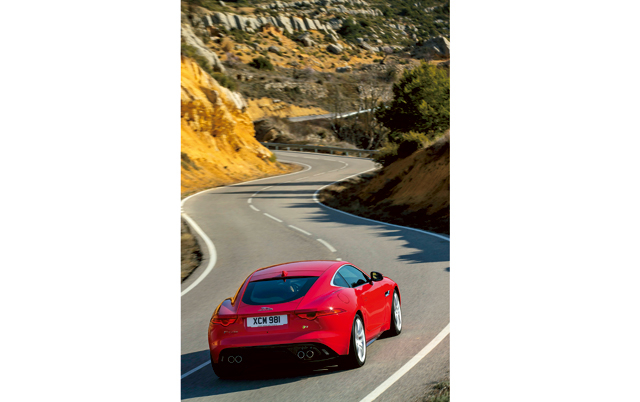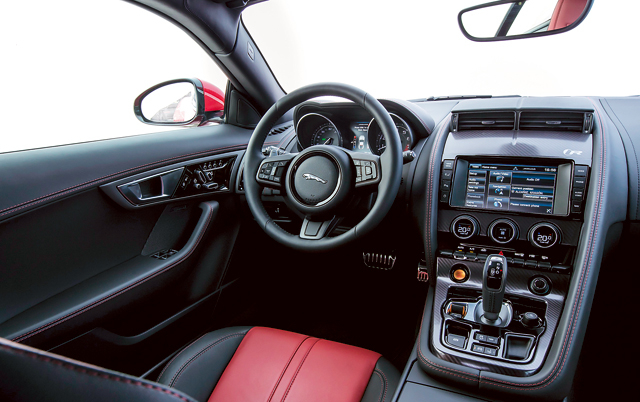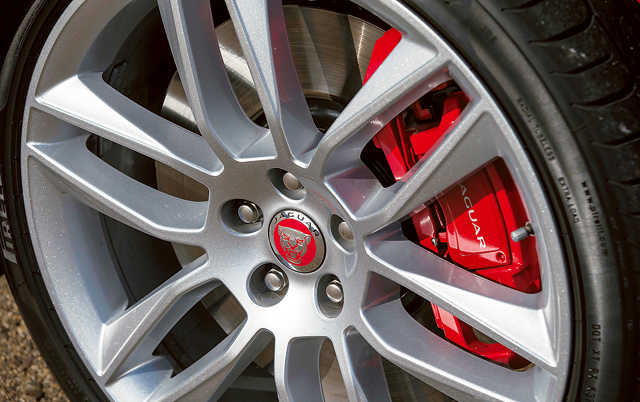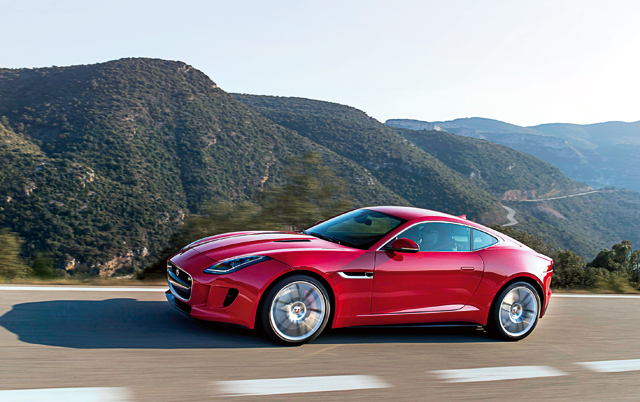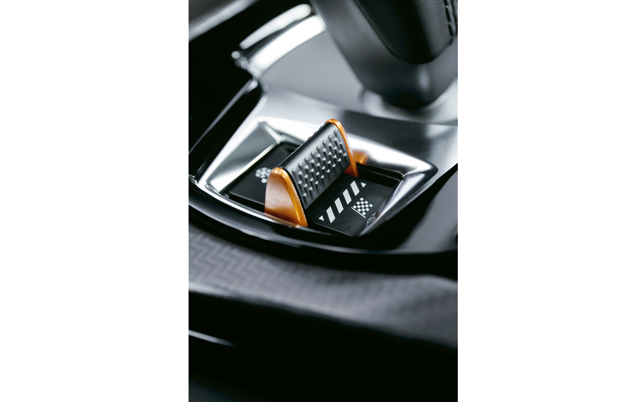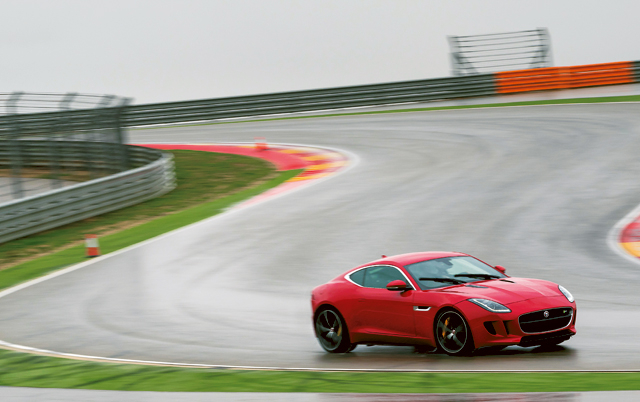
Jaguar’s eminent sporting heritage is arguably fresher in the minds of those with greying sideburns and bad backs. It isn’t a surprise, then, if those younger than 50 find it utterly preposterous for the brand to be talking of taking on the 911. No one can blame them for being cynical. For more than half a century since the iconic C- and D-Type and the timeless E-Type set the benchmark for other sportscars, there hasn’t been a single car from Coventry that was fit to be mentioned in the same breath as a Porsche.
The XK is a luxurious grand-tourer rather than a pure sportscar, and the XJ200’s thunder was stolen by TWR’s V12-powered XJR-15. But now, decades later, when the British marque’s global top brass tell you in the most self-assured manner that their latest coupé is a 911-slayer, you sit up and take note. Because with the XF, the all-new XJ and the F-Type convertible, Jaguar designers and engineers have shown us in the past few years that they’re dead serious about taking the brand back to its glory days.
If looks alone can kill, the F-Type Coupé’s slinky lines are sharp enough to drive a stake through the German rival’s heart without moving an inch. Menacing and graceful at the same time, with a subtle nod to the past, the F-Type is a design breakthrough for the team headed by Ian Callum.
One look at the gorgeous silhouette and you realise this car is more than just a hard-top version of the F-Type roadster. In fact it’s so sublime it makes you feel that in the coupé, the designers have finished a project they had left incomplete in the roadster.
While the jet-fighter-inspired front end with the twin ‘shark gill’ openings flanking the grille is pretty much the same as the roadster’s, the coupé adds a third ‘heartline’ that runs from the A-pillar down to the tail of the car, forming a dramatically sweeping roof profile.
To ensure that the elegant ‘cabin-rearward’ flow is not spoilt, this entire portion is clothed in a single piece of cold-formed aluminium, and the rear wing sits flush with the body until it deploys at speeds higher than 110kph.
Firing up the 5.0-litre supercharged V8 in the top-banana R Coupé, I soon realise that it’s not just stunning looks that this new Jag has to offer. The soundtrack blaring out the quad exhausts is more dramatic and raucous than anything I’ve heard from any other car in recent times. It’s not as loud as the doctored wail of a Maserati or as deep or cultured as the rumble from an Alfa Romeo 4C. It’s more like a bewitching track rendered deliriously by a carefree spirit. No shackles, no rules, just pure unadulterated V8 melody at its best.
On full throttle, it crackles, pops and growls in a way a Porsche 911 screaming for life in a popcorn machine will not be able to match. It is so addictive that I find myself downshifting unnecessarily literally hundreds of times in the few hundred kilometres we drove along winding Spanish mountain passes and country roads. It brought out the hooligan in me that I never knew existed, as I approached blind corners at 120kph and saw the speedo needle go much further on narrow, snaking roads that were lashed by torrential rains the previous day.
The 54 additional horses and the 56Nm of additional twist over the roadster’s V8 become apparent in the way the F-Type Coupé gathers speed. Although the spec sheet says 0-100kph is despatched in 4.2 seconds, I would say that’s a very conservative estimate as the acceleration feels much quicker in reality.
As the Jaguar engineers were keen to point out, there were a lot of other things that contributed to the car’s superlative performance than the powerful V8.
The lightweight aluminium structure —although it’s not that light at 1,650kg — boasts torsional rigidity of 33,000Nm/degree, making it the most torsionally rigid production Jaguar ever, and is 80 per cent stiffer than the roadster.
Jaguar’s also making much of its Adaptive Dynamics system that keeps yaw, roll and pitch under check. Apparently, this system continuously monitors driver input and keeps adjusting damper rates accordingly up to 500 times a second. While I didn’t find a marked difference in stability in comparison with the roadster, what I found amazingly effective is the torque-vectoring system that works together with the Electronic Active Differential to quell understeer or oversteer if you overcook it around a corner, which you inevitably will in this car. It works fantastically well as I found out on the handling track at Spain’s Aragon Motor Land on a rainy day. Instructed to go against my instincts to release the brake early and understeer into a tight corner too fast, the torque vectoring system magically pulled the car back by applying brakes to the inside wheels, thus countering understeer.
On the 5.35km main circuit designed by Hermann Tilke and consulted by Ferrari test driver Pedro de la Rosa, I got seven laps with professional racing instructor Adriano Medeiros by my side. In Dynamic mode, and with Adriano and the R Coupé’s vicious roar egging me on to push the limits, I found myself having the most fun I’ve had on track; even more than when I caned the M3 GTS around Ascari a few years ago.
I could feel that engaging Dynamic mode makes the throttle response sharper, weighs up the steering and even allows fleeting moments of illusory heroism with those ever-so-brief drifts around sharp bends. But it’s also very easy to get carried away by this sense of security and to overestimate your limited talents. But unlike the eternally twitchy XK-R, it takes some goading for the F-Type to hang its tail out. It’s also reassuring that the carbon ceramic brakes, with six pistons at the front and four at the rear feature a pre-fill system that preps the brake line by applying low pressure to all corners as soon as you lift off the throttle. The braking performance is confidence-inspiring and consistent with little fade even after seven laps of hard driving.
Jaguar claims this car has lapped the Nürburgring Nordschleife in 7 minutes and 39 seconds, which matches the 911 Turbo’s record, and after driving it around a track and especially after two fast laps with a pro-driver, there’s no reason to doubt it. However, despite its highly involving dynamics and performance, it must be admitted that the Jag cannot match the precision and the connected feel offered by its German nemesis.
And strangely for a car that looks magnificent and is solidly built, the interior is not as sophisticated or distinctive as you’d expect, with some of the materials used below par in look and feel. But that and the fact that the wing when deployed obstructs the rear view are the only two gripes I can come up with about the car. Overall visibility is great otherwise and finding the perfect driving position is very easy. Seats are fairly comfortable and slide back enough to free up adequate legroom for taller drivers to stay comfortable on a long drive.
It’s loud, it’s fast, it’s fun to drive and it’s the most powerful series-production Jaguar ever made. With the F-Type Coupé, Jaguar has taken the fight right up to the doorsteps of established Italian and German sportscars. It’s without doubt the first proper sportscar from the British marque since the Sixties, and one that has the potential to give Porsche some serious competition. It can’t match the near-telepathic driving dynamics of the 911, but the F-Type Coupé tugs at your heartstrings and plasters a grin on your face in a way the more clinically precise Porsche can never do.
I’m convinced this is a car that today’s youth will be talking about 50 years from now as the car that shook up the world’s sportscar market in the early 21st century.


